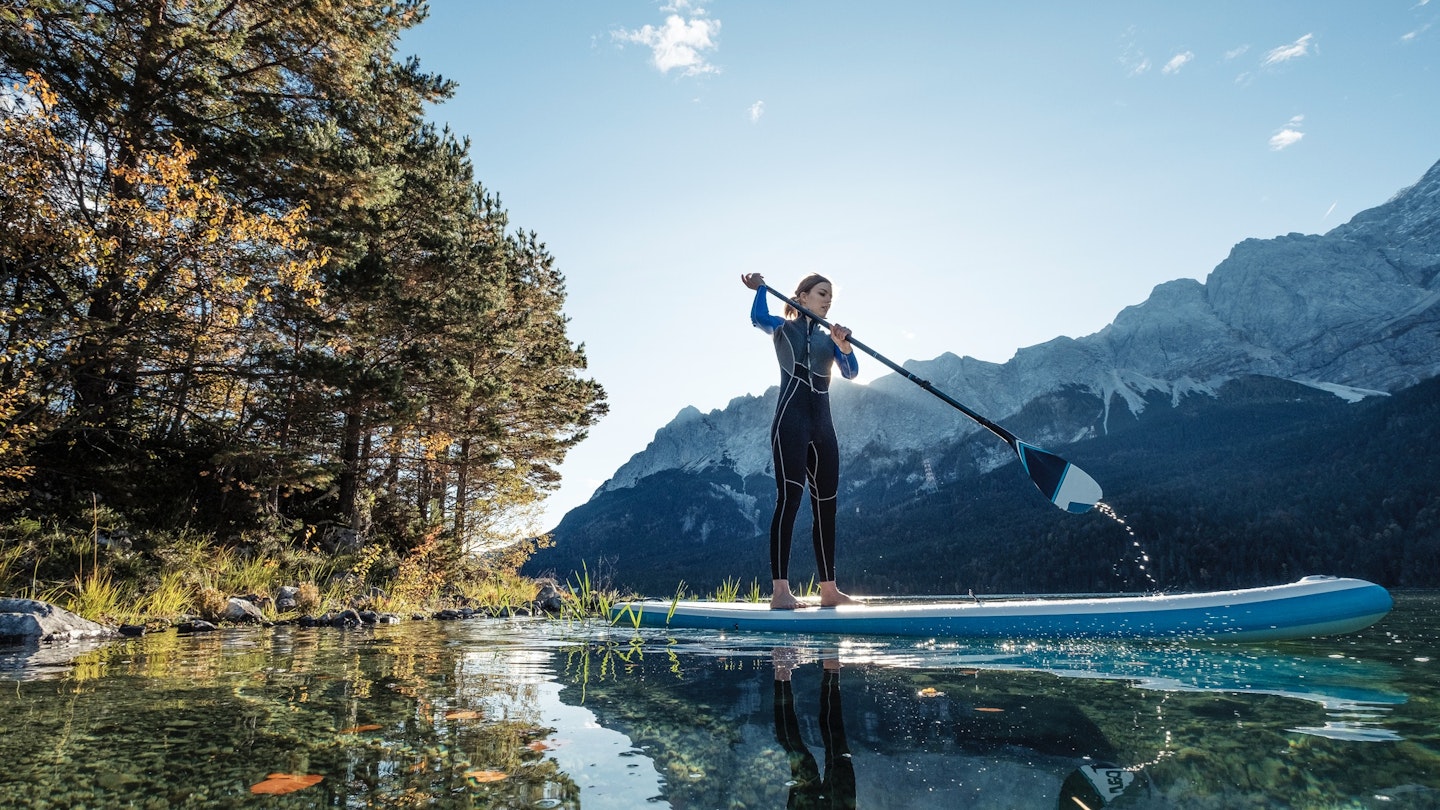Top 10 Experiences in Bavaria with GoTravelDaily
Practically a country unto itself, Bavaria offers more than most independent states of its size. Think of peaks over 2000m (6560ft) and sweeping plains, medieval cities and 21st-century museums, Roman ruins and Alpine lakes. You could spend a lifetime exploring it all. If you need a place to start, here are 10 experiences that will introduce you to the pleasures of this special corner of Germany.
1. Take the High Road to the Alps
Geography may have granted Germany’s south a mere sliver of the Alps, but the region makes the most of its mountains, many of which are just a short train ride from central Munich. The ski resort of Garmisch-Partenkirchen is the ideal destination for snow enthusiasts, as it sits under Germany’s highest mountain, the Zugspitze. The top can be reached by a special train. Surrounded by Austria on three sides, the Berchtesgadener Land in Bavaria’s far southeast delivers all the best Alpine pleasures, offering dramatic mountain scenery, great hiking, and splendid lake vistas.
Local tip: Skiing is a big deal in the German Alps, with countless pistes to explore. The skiing season typically runs from mid-December to April, depending on weather conditions. When nature’s snowfall is scarce, artificial snow created by special cannon ensures the fun continues.

2. Lose Yourself in World-Class Museums
Countless months could be dedicated to Bavaria’s exceptional museums, some of which are among the finest in Europe. It would be easy to spend a week exploring Munich’s art museums alone, including the world-class Pinakotheken. The diverse exhibitions cover a range of interests, from the intricate artistry of the Alte Pinakothek to the delights of the modern art showcased in the Pinakothek der Moderne. Visiting the Deutsches Museum offers insight into the country’s storied technical past.
Planning tip: Many of Munich’s museums charge only €1 on Sundays, which could significantly ease your travel budget if you plan to visit more than one.

3. Sample Bavaria’s Hop-Infused Traditions
Munich is often referred to as the city of art and beer. After enjoying art during the day, evenings are dedicated to savoring one-liter steins of frothy brews in traditional beer halls. A must-visit time is during Oktoberfest, when millions of liters of beer are consumed. Outside Munich, the northern region of Franconia is renowned for its village breweries, producing a remarkable variety of small-scale regional beers known as Landbier.
Local tip: Look for beer gardens set under horse chestnut trees adorned with fairy lights, perfect for enjoying a refreshing beer in the company of friends.
4. Discover Ludwig II’s Castles
Bavaria is rich in medieval architecture, but it’s the 19th-century castles commissioned by King Ludwig II that draw the most visitors. Schloss Neuschwanstein, with its dreamy turrets and dramatic location, is Germany’s most popular tourist attraction, inspiring the iconic Disney Castle. Just as captivating are Herrenchiemsee, a Versailles-inspired palace, and Linderhof, a charming castle nestled amidst the Ammergau Alps.
Local tip: Linderhof is accessible via a pleasant hike from Oberammergau, adding to the scenic experience.

5. Feel the Speed at BMW
Bavaria is home to two high-performance automobile brands: BMW in Munich and Audi in Ingolstadt. BMW Welt (BMW World) is an automotive enthusiast’s paradise, showcasing the latest models in an engaging space. Tours of the nearby BMW Museum provide insight into the company’s history, and factory tours can also be scheduled.
6. Admire Bavaria’s Deep-Rooted Traditions
Bavaria brims with cultural experiences, from the world-famous Oktoberfest to enchanting Christmas markets. Traditional festivities are easily found, with locals often donning lederhosen and dirndls for celebrations and social gatherings. The region’s crafting traditions, like glass-blowing and beer-brewing by monks, provide deeper connections to its vibrant heritage.
7. Buy Bavarian
Shopping in Munich caters to every budget, with a wealth of unique items reflecting Bavarian culture that make for excellent souvenirs. Traditional folk costumes, luxury porcelain, and festive decorations are prominent among the many offerings. Visiting the local markets provides a chance to find these treasures and indulge in the region’s heritage.

8. Make a Splash in Bavaria’s Gorgeous Lakes
Between Munich and the Alps, Bavaria’s foothill lakes mirror charming villages and classic church spires. Notable lakes include Starnberger See, located southeast of Munich, and the scenic Chiemsee, ideal for boat outings. However, the crown jewel remains Königssee, renowned for its stunning beauty set against dramatic Alpine backdrops.

9. Chow Down Like a Local
Bavaria’s hearty, meat-focused cuisine pairs wonderfully with its local brews. Munich boasts a thriving culinary scene, presenting options from vegetarian to Michelin-starred restaurants. A true Bavarian specialty is Weisswurst, a delicate sausage typically enjoyed for breakfast with sweet mustard and a pretzel. It’s a dish to savor before noon, as they are traditionally eaten fresh.

10. Set Out on the Romantic Road
The Romantic Road is Germany’s most beloved tourist route, stretching 350km (217 miles) from Würzburg in the north to the Alps in the south. This scenic drive features perfectly preserved towns like Rothenburg ob der Tauber, Dinkelsbühl, and Nördlingen. count on spending days exploring the quaint villages along the way.
Planning tip: Summer sees millions traveling the Romantic Road, so consider a visit in winter for a more serene experience, enhanced by a blanket of snow that adds to the mystical charm of these historical sites.





